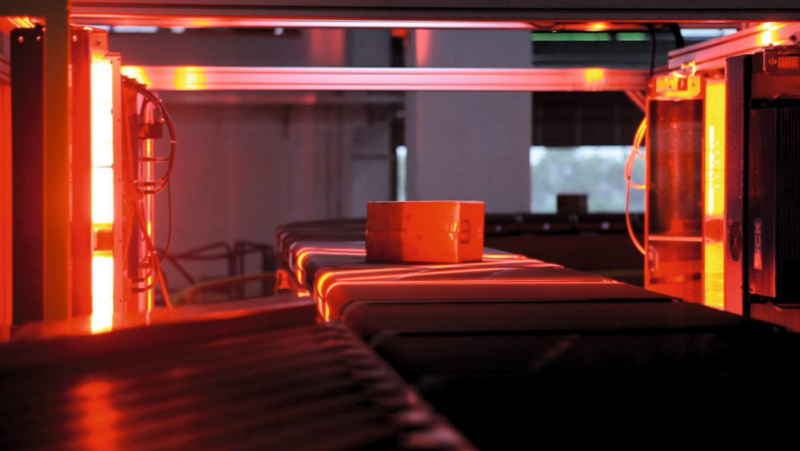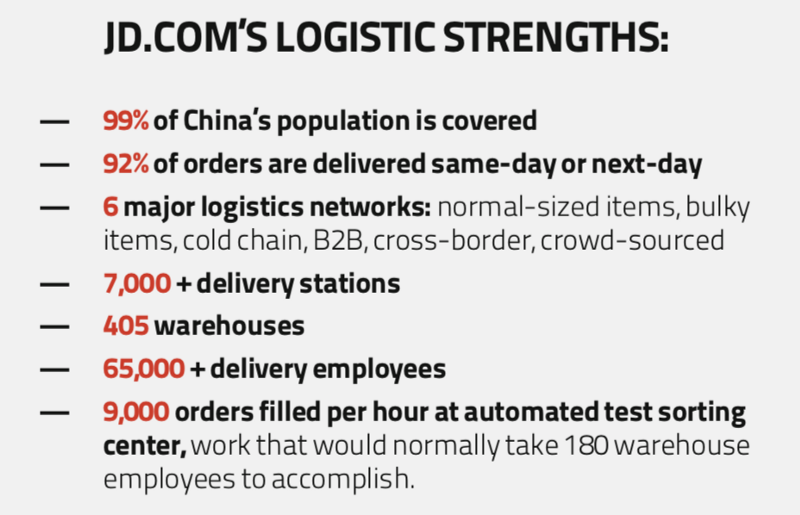There is a very different future in store that integrates online, offline, logistics and data across a single value chain.
Thanks to a predictive logistics system that uses Big Data analysis to enable it to dispatch goods more effectively, the online retailer JD.com was able to deliver the first iPhone 7 to a consumer just 10 minutes after it went on sale in China last year. The Chinese e-commerce giant, which reported revenues of $37.5 billion in 2016, is making a name for itself as a logistics leader by building the country’s largest low-altitude drone logistics network and automating its distribution centers to optimize supply-chain efficiencies.
But JD.com is not stopping there. It is counting on reaching new customers and securing valuable data by connecting online and offline shopping. Richard Liu, JD.com’s founder and CEO, and a scheduled speaker at the World Economic Forum’s annual meeting January 23–26, will outline a strategy he calls “retail-as-a-service” during a scheduled session in Davos. JD.com says this online-offline hybrid strategy will not only improve its own business, but also help its partners reduce costs, improve operational efficiencies and reach new consumer groups through its smart logistics and supply-chain management capabilities as well as sophisticated Internet marketing tools. It is part of a trend in China.

In addition to JD.com, big Chinese Internet players such as Alibaba have begun transforming brick-and-mortar stores by integrating online, offline, logistics and data across a single value chain.In the past few months JD.com has announced the opening of a high-tech supermarket chain called 7Fresh and unmanned convenience stores in China. Like the rival e-commerce giant Alibaba, which recently opened its own line of physical stores, JD. com allows shoppers to use a mobile app and digital payments. The stores also collect data on customers in other ways: In the grocery store, shopping assistant robots follow customers around and sensors on the shelf indicate their preferences and feed the info back to JD.com. JD.com’s unmanned convenience stores are using facial and recognition technology developed in its own labs to register payment and product identity, meaning customers do not have to wait in a checkout line. Cameras on the ceilings of the stores recognize customers’ movements and generate heat maps of their activity to monitor traffic flow, product selection and preferences, helping store owners to stock efficiently.
Through AI, Big Data and other innovative technologies, regardless of whether a customer is in a physical store or ordering online “we know where the customer is and what they like and can ensure that the right products are in place,” Bao Yan, director of planning at JD Logistics, said in an interview with The Innovator. “This is important to beat the competition and provide a good customer experience.”

Big Data Drives Efficiency
For example, by leveraging Big Data analysis, the company says it is able to identify the likely relevancy of different products for its online customers. JD.com says it can tell that most customers who buy product A would also like to buy product B, together in one order. By relocating relevant products from multiple warehouses into one it is able to cut down pick-up costs, packing and delivery time. Customers also receive fewer parcels per single order. According to tests, JD.com says it can lower the ratio for splitting orders by 50%.
By leveraging Big Data, the company says it is additionally able to place products at optimized locations at warehouses, helping to make the pick-up process at warehouses 25% more efficient. JD.com spun out its logis- tics arm as an independent company last April. Customers include the U.S. retail giant Walmart. JD.com hosts the U.S. company’s e-commerce platform in China, permitting shoppers to buy products directly from Walmart stores. JD.com also handles deliveries in China for Walmart stores and the two companies are expanding their partnership to include inventory, says Bao. For example, if customers order bottled water on JD.com’s site they may be directed to the nearest Walmart store. In addition to Walmart, “we are working with a lot of e-commerce companies and our logistics company’s business is growing very well,” says Bao. Key, she adds, is the fact that JD.com owns its fulfillment facilities and controls delivery. “We are a one-stop shop,” she says. Bao also attributes the company’s success to technology. “For the last 12 years it has been all about technology and we are continuing to invest in AI and robotics,” she says.
The company has opened a fully automated warehouse in Shanghai. Some of that technology is being rolled out to other warehouses now, says Bao. But, she cautions, it doesn’t make sense to adopt a one-size- fits-all approach. JD.com plans fully automated warehouses for different categories of products. “We handle products from categories that include electronics to fashion and food. You don’t automate the picking up of cell phones the same way you pick up garments. We have learned that we need to have the right sets of data in order to automate the process. We need algorithms to recognize an object and pick it up correctly and load it in an efficient way. The amount of data and quality of data and how to apply it and the algorithms are key.”
JD.com is also focusing on automating the last mile for deliveries by using drones, where it makes economic sense, such as in rural, mountainous areas in China with very poor infrastructure. While drone delivery is still in a pilot phase, the company has logged more than 100,000 hours of tests, says Bao. “Battery life is still somewhat of an issue but the technology is mostly ready for widespread use,” she says.
While the adoption of all of this technology has helped the logistics business to boom, JD.com is betting that its move into physical commerce will fur- ther boost its online business, bring in new shoppers, richer data sets and new sources of revenue, and help it further disrupt traditional retail while delivering better results for itself and for its customers.






